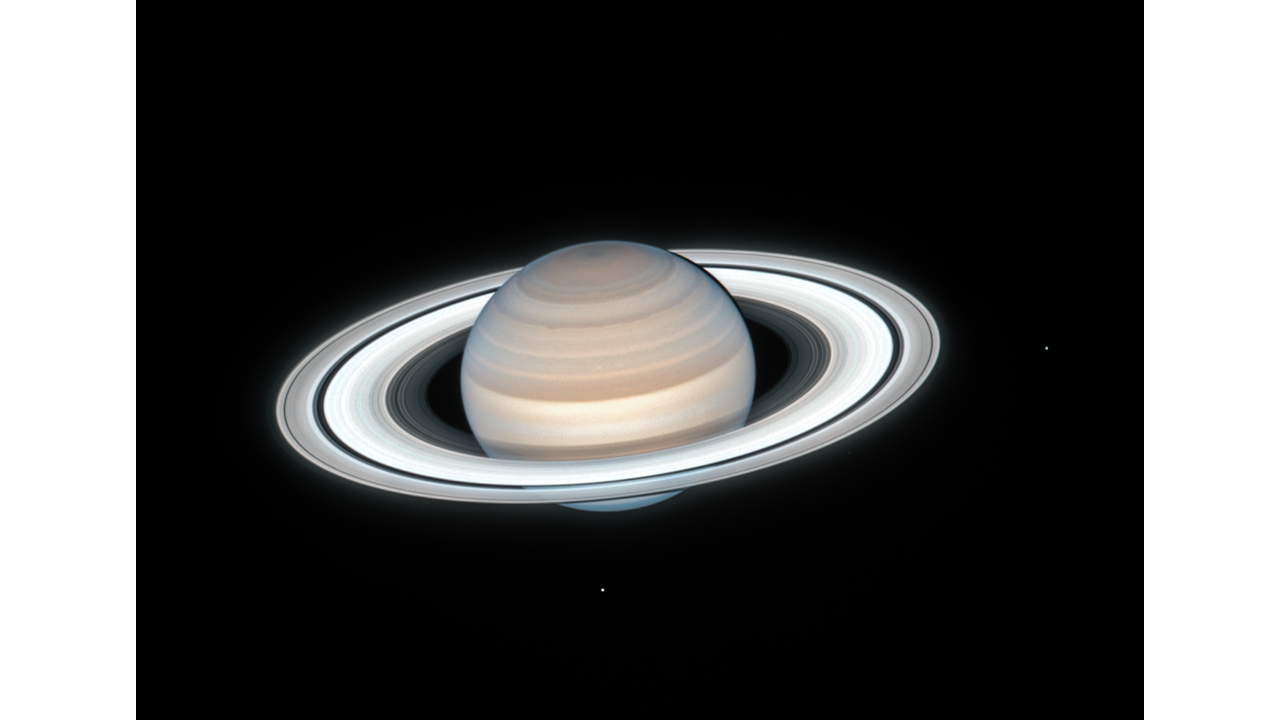MIT, Woods Hole Oceanographic Institution researchers find wave activity on Saturn’s largest moon may be strong enough to erode the coastlines of lakes and seas.
Tag: Saturn
VLA Finds Megastorms on Saturn Disrupt Gas Giant’s Deep Atmosphere in Surprising Ways
A study of rare megastorms on Saturn using data from the National Science Foundation’s Karl G. Jansky Very Large Array has revealed disruptions in the distribution of ammonia gas in the planet’s deep atmosphere. The findings raise questions about just how different gas giants can be from each other, and challenge scientists’ understanding of how megastorms may form on planets other than Earth. The results of the study appear in Science Advances.
Investigations reveal more evidence that Mimas is a stealth ocean world
When a Southwest Research Institute scientist discovered surprising evidence that Saturn’s smallest, innermost moon could generate the right amount of heat to support a liquid internal ocean, colleagues began studying Mimas’ surface to understand how its interior may have evolved.
Titan-in-a-glass experiments hint at mineral makeup of Saturn moon
Titan, Saturn’s largest moon, has a dense atmosphere and weather cycles like Earth. Now, researchers have recreated the moon’s conditions in small glass cylinders, revealing properties of two molecules believed to exist as minerals on Titan. They will present their results at ACS Fall 2021.
Dragonfly mission to Titan announces big science goals
NASA’s Dragonfly mission, which will send a rotorcraft relocatable lander to Titan’s surface in the mid-2030s, has big goals.
Saint Louis University Student Searches for Possible Origins of Life on Saturn’s Largest Moon
Chemistry grad student Steven Skaggs was recently selected for funding by the Future Investigators in NASA Earth and Space Science and Technology (FINESST) program.
Key to Carbon-Free Cars? Look to the Stars
In a decade-long quest, scientists at Berkeley Lab, the University of Hawaii, and Florida International University uncover new clues to the origins of the universe – and land new chemistry for cleaner combustion engines
Johns Hopkins Scientists Model Saturn’s Interior
New Johns Hopkins University simulations offer an intriguing look into Saturn’s interior, suggesting that a thick layer of helium rain influences the planet’s magnetic field.
Astronomers estimate Titan’s largest sea is 1,000-feet deep
Far below the gaseous atmospheric shroud on Saturn’s largest moon, Titan, lies Kraken Mare, a sea of liquid methane. Cornell University astronomers have estimated that sea to be at least 1,000-feet deep near its center – enough room for a potential robotic submarine to explore.

Hubble Sees Summertime on Saturn
Hubble photographed Saturn and its rings on July 4, during summer in Saturn’s northern hemisphere. This image is taken as part of the Outer Planets Atmospheres Legacy (OPAL) project. OPAL is helping scientists understand the atmospheric dynamics and evolution of our solar system’s gas giant planets.